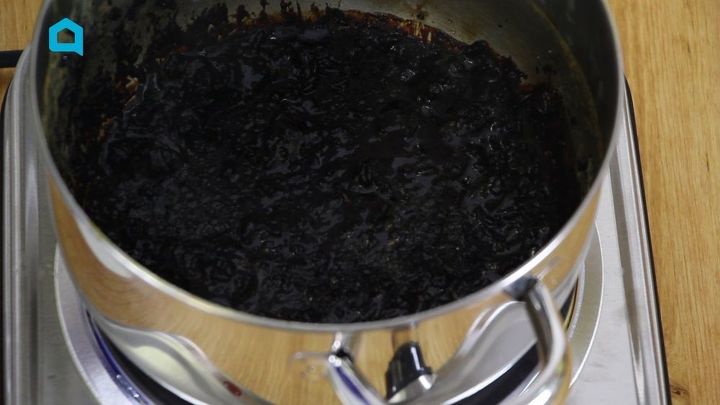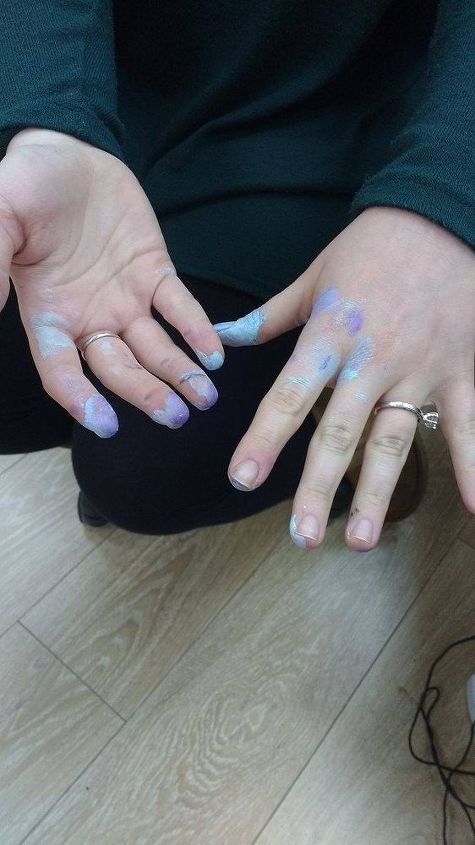What would cause rooms to smell like cat urine, when there are no cats in the house?
Related Discussions
How to clean hardwood floors in the kitchen?
What is the best way to clean hardwood floors in the kitchen?
How to clean smoke smell out of pillows?
How do I wash pillows to remove the smell of smoke?
How to clean paint brushes with paint thinner?
How to clean paint brushes with paint thinner?
How to clean a mirror with vinegar?
Vinegar seems to be the answer to everything. So how do I use it to clean my mirror?
What is the best way to clean a burnt pot?
I made a thick soup for winter and by accident left it on the fire for too long. Now my soup pot is basically ruined! Any hacks to help me clean the burnt pot? Need t... See more
How can I get spray paint off my hands?
I LOVE spray paint projects. My problem: the cleanup!How can I get spray paint off my hands after crafting?Thanks!!



I thank you for your answers regarding the "cat pee" smell in my home, but we haven't had our crawlspace encapsulated. We also have a cat, but he would've had to pee a terrific amount of pee to smell like it does! We woke up one day & the smell is driving us crazy. 1 day it was gone, but nope, came back more stinky! We cleaned a drain in the basement. We've lived in our home for 18 yrs & this is the first time our home has smelt like this. Who checks your house for this problem? A specialist or what? HELP ME PLEASE!!!!!!
I have had the same situation here in NJ. The cat urine smell with no cats. I have an older section of crawl space with a concrete floor from the original owner. I never noticed the smell in the room directly above the crawl space until I replaced the engineered hardwood with a vinyl tile which was done in November when it was fairly cold. Once the weather warmed up in late February we noticed the smell. We were crazy trying to figure it out. This space was enlarged into an in-law suite with a newer crawl space with a poured concrete floor with a vapor barrier under the concrete. There has been no smell over this section. I recently installed a radon fan under the slab of the old section and discovered there was no vapor barrier under the slab. There are no visible signed of mold. The joists look as if they were installed yesterday. Paper sided batt insulation was installed between the joists when the addition was done. I don’t think this is the problem the insulation is in the new section without the smell. The radon system suction pipe below the slab has not changed things. One issue may be that there is no crushed stone below the slab to allow air flow below the slab. It was all compacted ground. I tried the closing the vents and even put a dehumidifier in the crawl space which seemed to help initially. The smell was never completely removed. The smell has caused me to have headaches in the room above. I reopened the vents and installed a vent fan and that helped but if humidity is high the smell comes back stronger. I am ripping up the vinyl tile and reinstalling engineered hardwood above a double layer of Aquabar B underlayment which should at least keep the smell out of the living space. Has anyone come up with a solution?
This won’t be helpful.. but ghosts or demons lol. I’m a strong believer in both and strange smells of urine or cigarette smoke can be a sign of a ghost. If it’s a rotten meat smell, it’s a demon more likely. Burn some sage and put crystals in each corner of your house. Laugh at me if you want, I don’t care, but sometimes the only explanation is the hardest to believe!
Hi Madeline, cat urine seeps into wood and carpets and is really difficult to get rid of, even after many years. This video will help though https://www.youtube.com/watch?v=RTZ6UKlQ6HI
No Ventillation is the problem. Open up the area. Get rid of all the stuff that is damp. Dehumidifey - Create permanent ventillation for the area. When All timbers that are damaged or rotten are replaced and all looks well again, you can then close of the area, BUT leave permanent Vents open for good air flow.
I know bats smell horrible. I would think there are several animals that could leave that smell behind.